Allion Labs | Henry Hung
Response time is the time it takes from receiving signals to outputting results. For LCDs, response time can refer to the rise time—the time taken for a display to change from the darkest to the brightest settings—and the fall time—the time taken for a display to transition from the brightest to the darkest settings. There is also gray-to-gray (GTG) response time, which is the period of time it takes a pixel to change from one shade of gray to another.
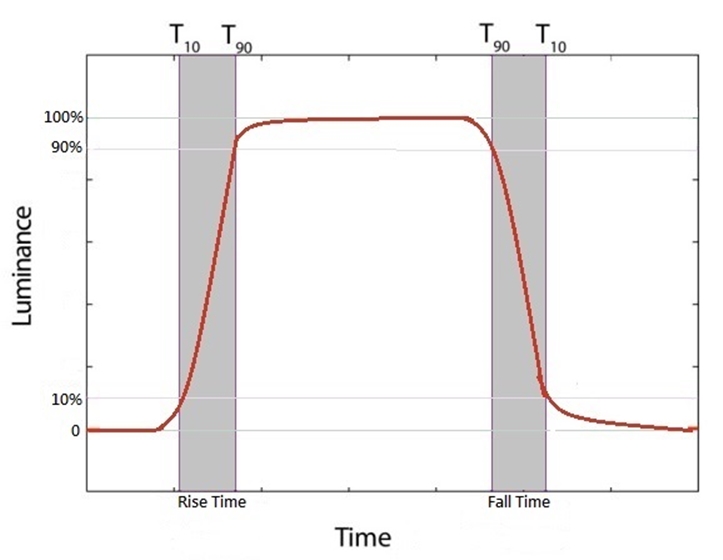
Overshooting and undershooting are also crucial concepts: the former occurs when the signal exceeds the target value during the modulation process while the latter occurs when the signal falls below the target value. Both are presented as a percentage and affect the reaction time.
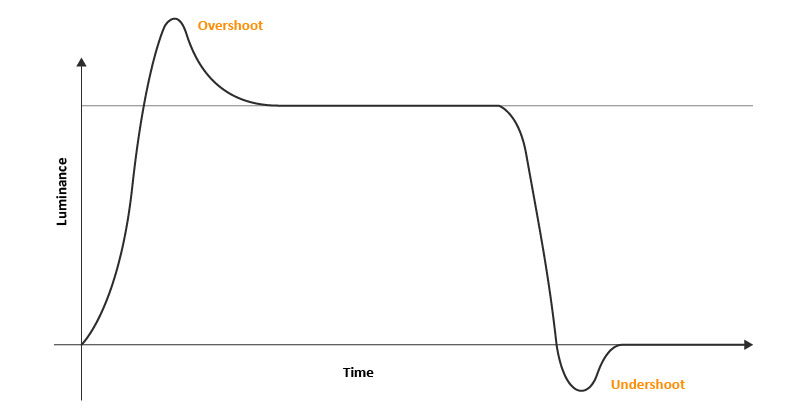
With the basics in mind, we will share the potential risks from our test data based on the actual case measurement results. The table below shows the response time results of a 32” 2560×144@165Hz monitor through 5x5x GTG response.
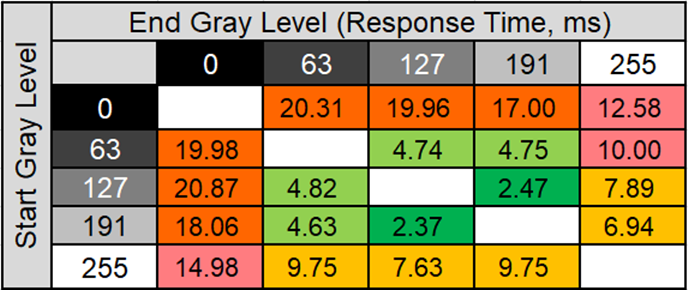
Explaining Rise Time, Fall Time, and Gray-to-Gray Response Time
We further organized the GTG response time in the following table. The average value stands at 10.97ms, with the best value of 2.37ms and the worst value of 20.87ms. This GTG response is acceptable for office-related tasks but disappointingly inadequate for gaming purposes.
| Avg. Response | 10.97 ms |
| Avg. Rise | 10.66 ms |
| Avg. Fall | 11.28 ms |
| Best | 2.37 ms |
| Worst | 20.87 ms |
The screen refresh rate is 165Hz, meaning each second 165 frames are displayed, and the refresh window lasts for 6.06ms, which is the time each frame takes to update.
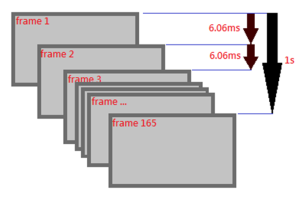
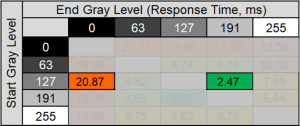
From the table above, one can see that it takes 2.47ms to transition from gray127 to gray191. When the response time falls below the time it takes for one frame to update (6.06ms), the screen has fully transitioned to gray191.
frame1: gray 127
frame2: gray 191
But if the screen changes from gray127 to gray0, it takes 20.87ms. The response time is longer than the time it takes for one frame to update, and it takes 3.44 frames to switch to the gray0 screen.
frame1: gray 127
frame2: gray x
frame3: gray y
frame4: gray 0
Ghosting occurs when the user sees the transition process from gray x to gray y. Taking a step further, one can calculate the requirements of the screen refresh time, yielding a 30% refresh compliance. This indicates that 70% of screen performances are unsatisfactory and show after images.
| Refresh Rate | 165 Hz |
| Refresh Window | 6.06 ms |
| Refresh Compliance | 30% |
How Overshooting and Undershooting Affect Response Time
Now we can examine overshooting and undershooting. Generally, LCDs have an overshoot of no more than 20% and an undershoot of no more than 15%.
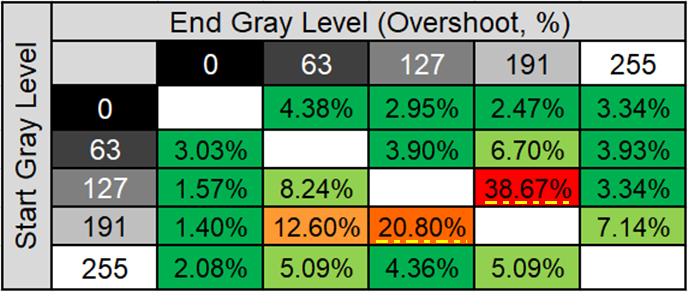
Assessing the twenty results in the figure above, we learn that 38.67% and 20.80% of the binomial results do not meet the requirements for overshooting and undershooting. With calculation, we obtain an inverse ghosting rate of 10%, with a lower value indicating better performance.
| Inverse Ghosting rate |
10% |
2 / 20 x 100% = 10 %
Now, what is inverse ghosting? First of all, we must understand what overdrive is. To obtain a better response time, the LCD will apply a voltage to the liquid crystal pixel to increase changing speed and thus increase the response time, which is called overdrive.
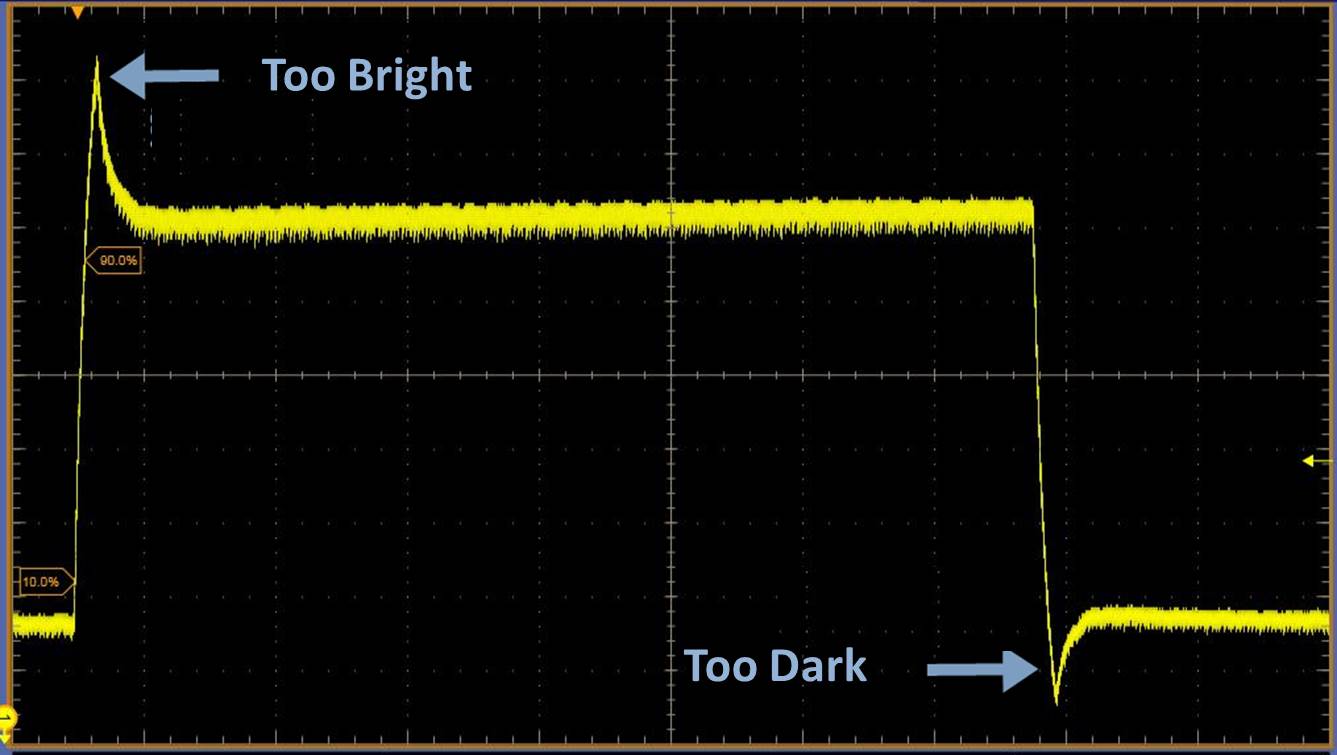
While the response time decreases, the brightness of the conversion exceeds the target range, causing the pixels to adjust back to the target value.
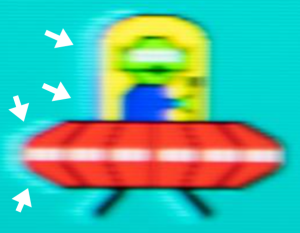
During this adjustment process, the addition of moving objects will produce lights that are too bright or shadows that are too dark. As shown in the figure below, the excessive overshoot causes inversed ghosting on the left side of the object.
A good gaming monitor is determined by fast response time and refresh rate, which must be balanced to avoid excessive overshoot due to excessive voltage.
In addition to response time, there are many other considerations such as Delta E, Gamma, color gamut, and uniformity that also need to be examined to achieve quality panel performance. Having 30 years of experience in panel testing, Allion recommends panel vendors have panel products undergo all-around testing and evaluation before the product enters the market. We help you create solid product performance, which helps generate positive consumer ratings and an excellent brand image. If you want to learn more about our panel services, please feel free to contact Allion via the contact form or email.
Similar Topics
An Analysis of Player Demands Based on Gaming Monitor Latency Test Results






































